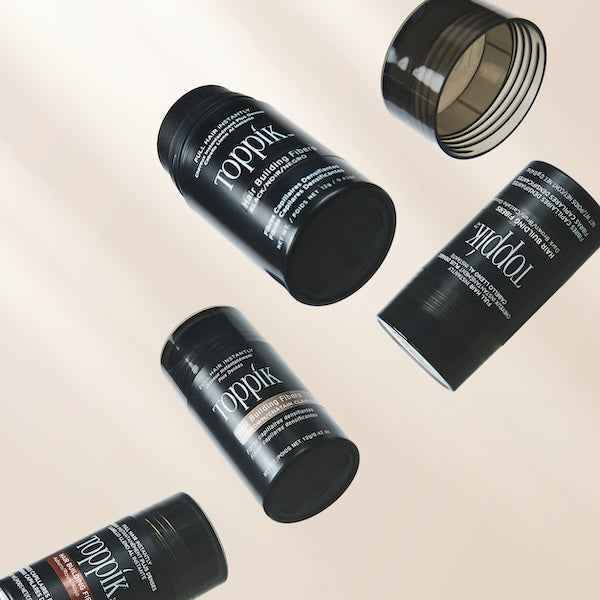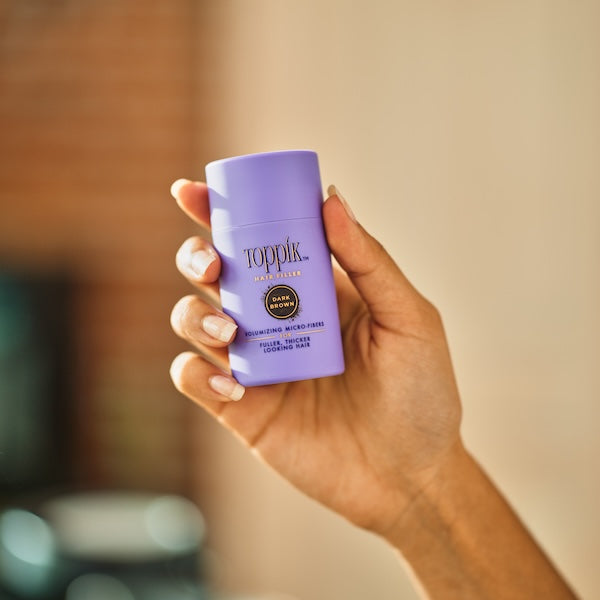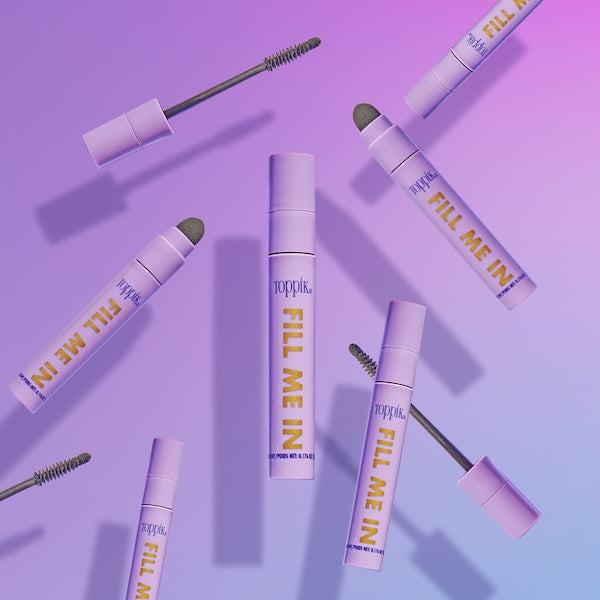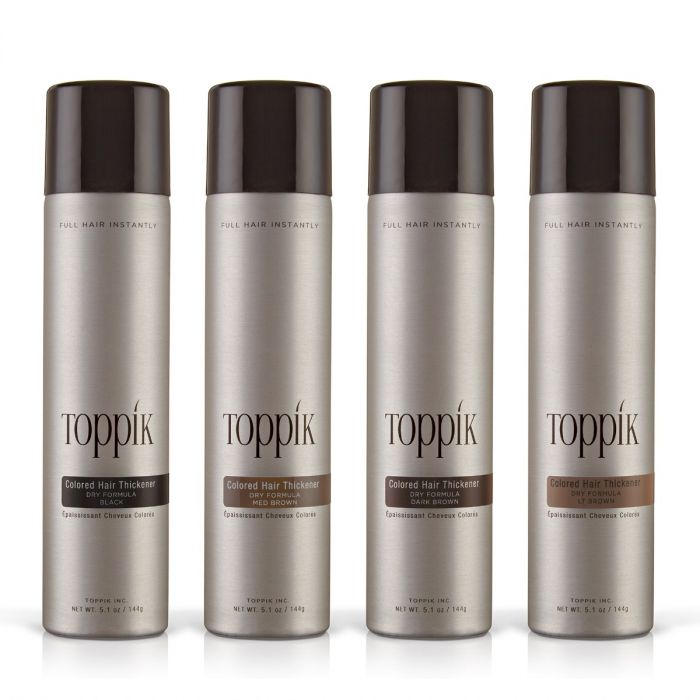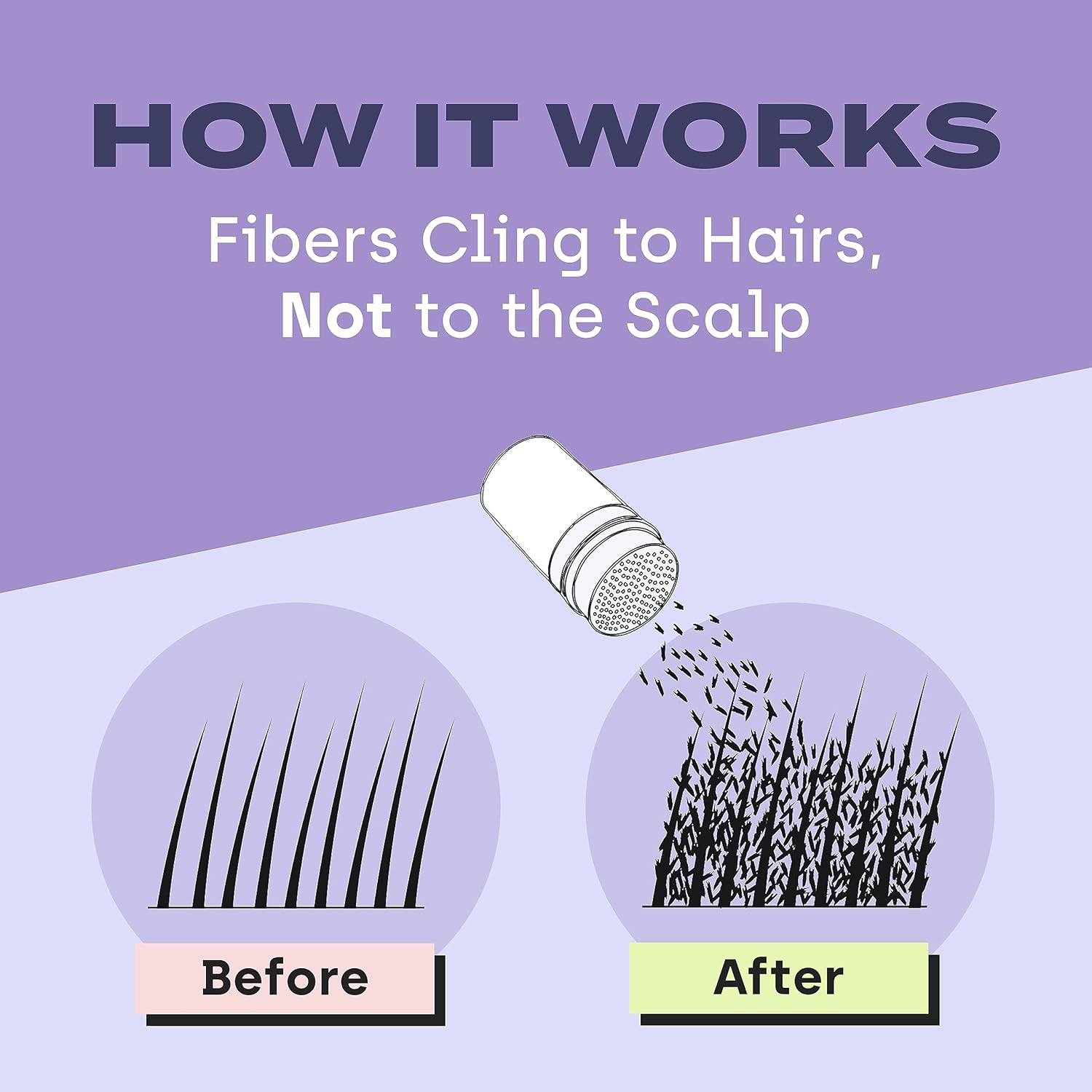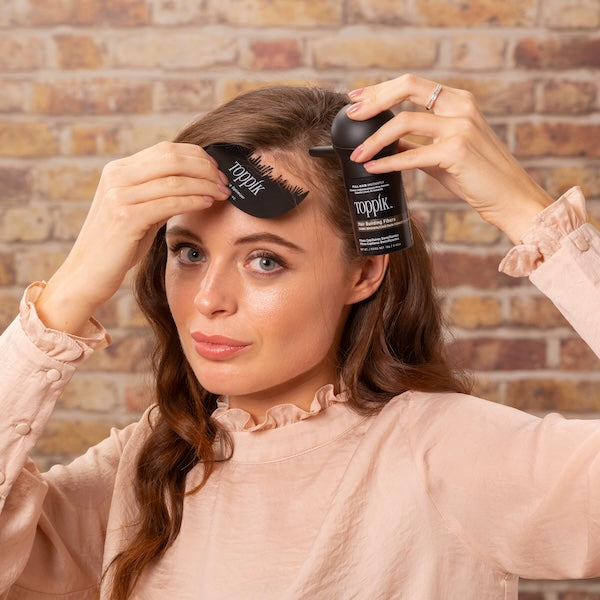Scalp problems can be uncomfortable and embarrassing, but not all scalp conditions lead to hair loss. However, many common scalp conditions do require a trip to the doctor to clear up the symptoms and prevent them from becoming more serious.
Keep reading to learn more about common scalp conditions, and what you can do about them. Remember, if you’re looking to conceal irritated scalp or scalp show-through, Toppik Hair Building Fibers has you covered!
The 5 Most Common Scalp Conditions
Eczema & Dry Scalp
Are you experiencing patches of dry, rough, itchy skin on your scalp? It could be eczema. When the skin’s naturally protective lipid barrier is compromised, it may result in an itchy and inflamed eczema rash.
Switch to using fragrance-free formulas of hair care products, since fragrance can irritate eczema. If your eczema persists, you can ask your dermatologist for a cream that will restore the scalp’s natural lipid barrier.
Itchy Scalp
While there are many causes of an itchy scalp, one of the most common is just not cleansing your scalp correctly. Not washing your hair correctly can lead to a buildup of dirt, sebum, and hair product on your scalp. This buildup can make the scalp feel itchy. 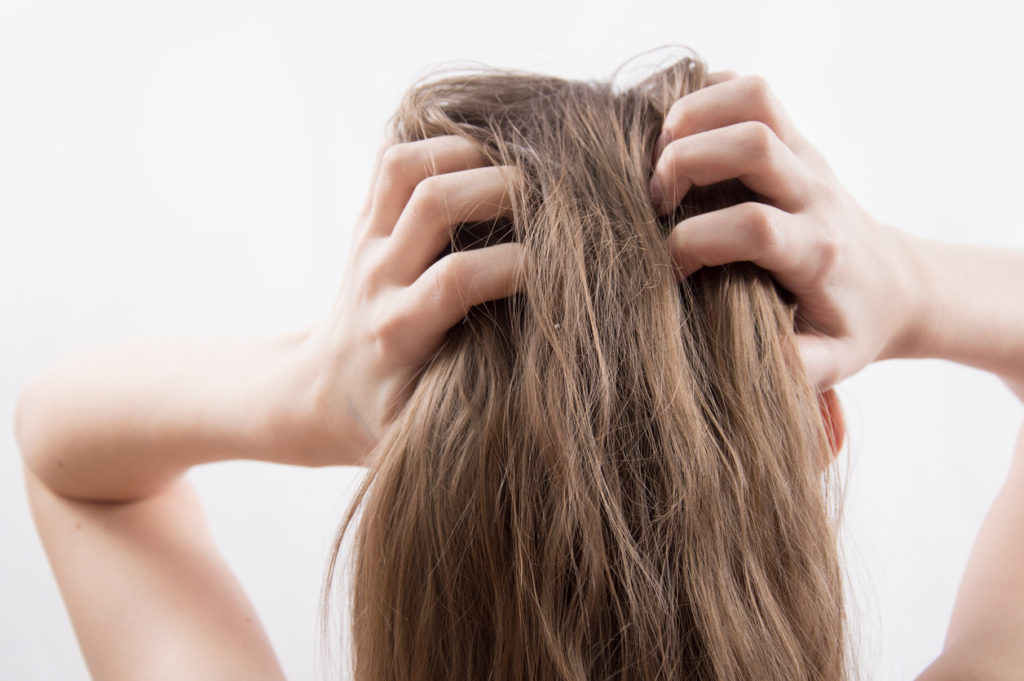 To treat an itchy scalp at home, wash hair three to four times per week with a gentle shampoo like Toppik Hair Building Shampoo. When washing your hair, massage the shampoo into your scalp with your fingertips to remove dirt and excess sebum. Be sure to rinse hair thoroughly to remove all shampoo and conditioner from the hair and scalp.
To treat an itchy scalp at home, wash hair three to four times per week with a gentle shampoo like Toppik Hair Building Shampoo. When washing your hair, massage the shampoo into your scalp with your fingertips to remove dirt and excess sebum. Be sure to rinse hair thoroughly to remove all shampoo and conditioner from the hair and scalp.
Additionally, use a clarifying shampoo once per month to help to remove excess buildup.
Psoriasis
Psoriasis is an autoimmune disorder that can cause pink or silver scaly plaques to appear on the scalp or elsewhere on the skin. While there’s no cure for this condition, your dermatologist can prescribe you a topical spray or cream. Psoriasis can also be a sign of a food allergy, so your doctor may recommend dropping gluten or dairy from your diet to see if your symptoms improve.
Seborrheic Dermatitis
Seborrheic dermatitis appears on the scalp as greasy scale with dandruff. This condition can be triggered by stress and weather, especially in climates with cold, dry winters.
While scientists aren’t sure of the cause, it’s thought that a type of yeast is the culprit. When left untreated, seborrheic dermatitis can result in hair loss. Thus, if you suspect you have the condition, you should visit your doctor right away for treatment.
If you have hair loss or hair thinning, use Toppik Fibers to cover scalp show-through and make hair look thinner. They resist wind, rain, perspiration and will last until your next shampoo.
Dandruff
Anyone who’s had flakes show up on their dark clothing is familiar with dandruff, which is actually a mild form of seborrheic dermatitis. Dandruff is a buildup of dead skin on the scalp. Dandruff can also cause an itchy scalp. 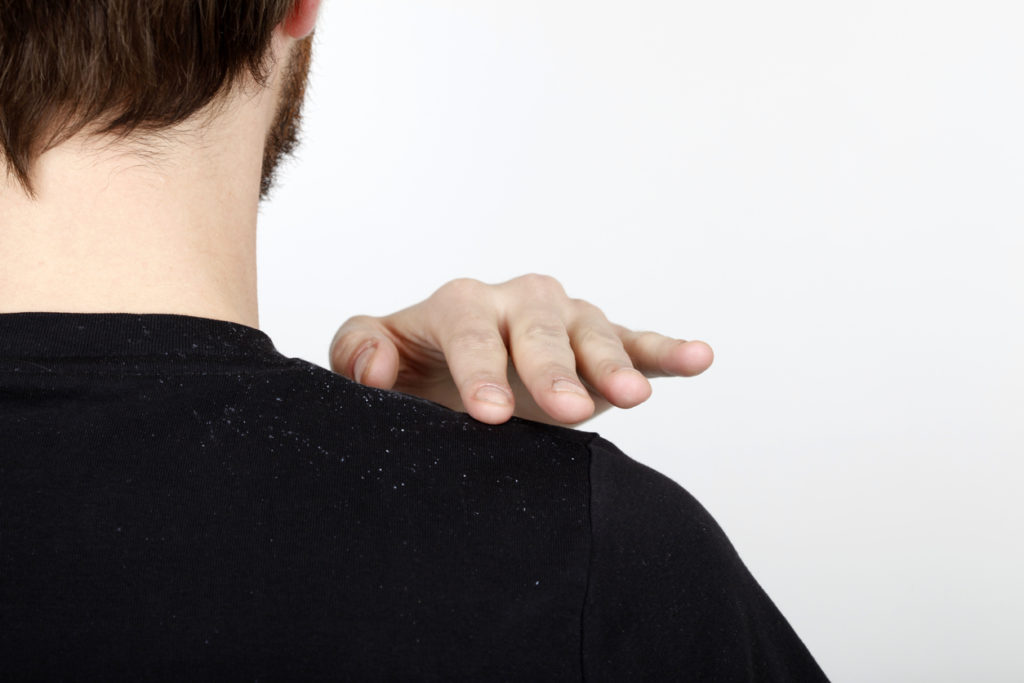 While there’s no cure, you can control dandruff by washing your hair with medicated shampoo.
While there’s no cure, you can control dandruff by washing your hair with medicated shampoo.

